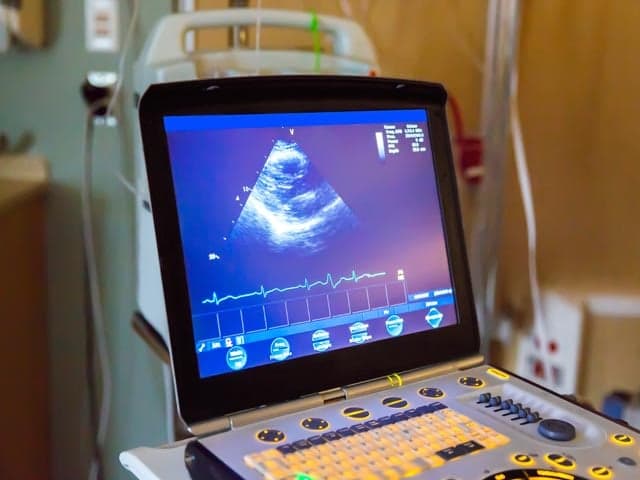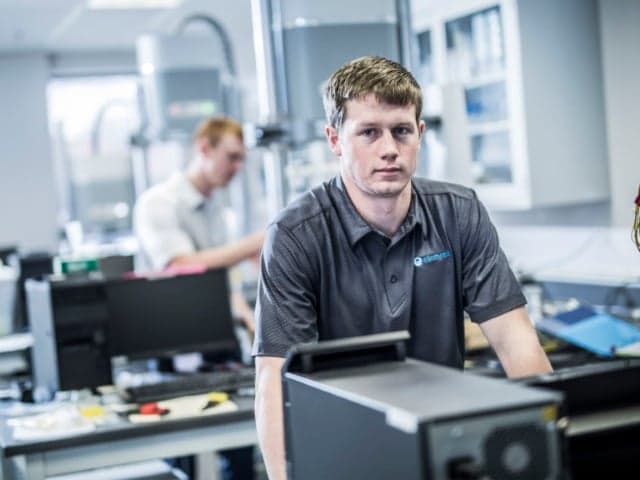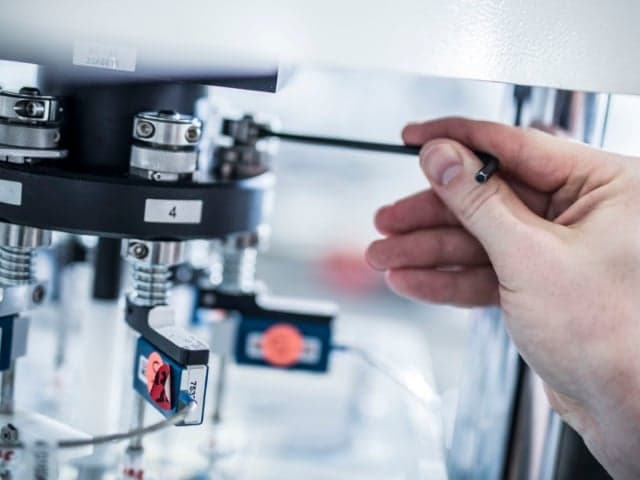Occluder & Closure Device Testing
Transform your cardiac occluder development with comprehensive durability testing that accelerates time to market. Our specialized expertise with challenging device designs supports your entire innovation journey from feasibility to final regulatory submission. We validate long-term device performance under physiological conditions, delivering reliable data to advance your structural heart devices and closure solutions.

What is Occluder & Closure Device Testing at Element?
Occluder device testing evaluates durability and safety of structural heart devices used to close cardiac defects. At Element, we provide low and high cycle fatigue testing to simulate deployment, retrieval, and long-term implantation conditions. These devices are typically attached by a catheter, inserted through a vein in the groin, and advanced to the heart to close defects, openings, or appendages. Our testing validates device performance under physiological stresses through pulsatile fatigue and axial testing methods.

What Can Element Offer You For Occluder & Closure Device Testing?
Components and products we test
Components and products we test
Element tests braided metal-based support frames and their integrated polymer and fabric mesh components. Our specialized evaluation focuses on critical areas like the device "waist" that connects the two disks, as this bears most loading during use. During deployment, the device is pushed out of the catheter so it opens fully with one disc on each side of the defect. Within approximately 6 months, tissue grows over the implant and it becomes part of the heart. We assess both structural integrity and deployment mechanisms through comprehensive testing protocols.
Key tests offered
Key tests offered
Elements testing suite encompasses both low and high cycle fatigue assessment to validate deployment, retrieval, and long-term durability. We conduct pulsatile fatigue testing from 40 million to 600 million cycles, complemented by axial fatigue testing in tension and bending modes. Specialized protocols evaluate fretting wear and corrosion in braided designs.
- Low cycle and high cycle fatigue testing for occluder devices
- Occluder device accelerated durability testing
Methods and solutions offered
Methods and solutions offered
We develop custom test protocols tailored to your specific device design and regulatory needs. Our approach combines simulated use geometry setups for deployment testing with long-term durability assessment. Regular inspection intervals throughout testing provide comprehensive performance data, with detailed documentation supporting your regulatory submissions. Device failure is defined by the manufacturer's criteria, and we inspect devices before, during, and after testing at predetermined intervals.
Low cycle and high cycle fatigue testing for occluder devices:
This testing involves repeated deployment and retrieval of the device to simulate initial misplacement and re-deployment (low cycle). It also evaluates the device’s ability to withstand long-term physiological stresses during implantation (high cycle). Testing is particularly focused on the "waist" of the device, which experiences the most load during use. Devices made with braided metal frames and polymer or fabric mesh are assessed for fretting wear and corrosion.
Occluder device accelerated durability testing:
Using ElectroForce 9100, 3200, or 3300 test instruments, we conduct pulsatile fatigue testing for 40 million to 600 million cycles. Feasibility tests target 40 million cycles, while regulatory tests run for 400 million or 600 million cycles. Axial fatigue testing is done in tension or bending. Device failure is evaluated according to the manufacturer's criteria, and devices are inspected before, during, and after testing at predefined intervals.
Cutting-edge equipment we use
Cutting-edge equipment we use
Our facility utilizes advanced ElectroForce 9100 stent series instruments for pulsatile fatigue testing, capable of running tests up to 600 million cycles. We employ ElectroForce 3200 and 3300 test instruments for axial fatigue testing, with specialized fixtures developed for unique device requirements.
Which labs offer this service
Which labs offer this service
Our team operates from Life Sciences hubs across the world, providing global access to our expert capabilities. Find your nearest Life Sciences hub on our Locations Page.
Specialized durability assessment
Standards we test to and components we test
- ISO 5840-1 Cardiovascular implants
- ASTM F2477
- ISO 25539-1
- FDA guidance for intravascular stents
- Atrial septal defect (ASD) occluders
- Ventricular septal defect (VSD) occluders
- Patent foramen ovale (PFO) closure devices
- Patent ductus arteriosus (PDA) occluders
- Left atrial appendage (LAA) closure devices
- Braided metal-based support frames
- Polymer and fabric mesh components
- Device "waist" connections
- Catheter delivery systems
Your Challenges, Our Solutions
Complete durability validation delivered
Advanced designs tested with precision
Regulatory documentation streamlined
Material integrity confirmed
Why Choose Element

Proven cardiovascular expertise
Advanced testing capabilities
Custom solution development
Quality focused results
30+years cardiovascular device testing expertise
600Mcycles in comprehensive durability testing
40Mcycles for feasibility studies
3+specialized testing methodologies

Frequently Asked Questions
What are common occluder device defects?
There are several defects, openings, or appendages that may require a closure procedure with an occluder device. These conditions include:
- Atrial septal defect (ASD): a hole in the wall between the atria
- Ventricular septal defect (VSD): a hole in the wall between the ventricles
- Patent foramen ovale (PFO): when the foramen ovale does not close spontaneously postnatally
- Patent ductus arteriosus (PDA): when the ductus arteriosus does not close spontaneously postnatally
Left atrial appendage (LAA): prone to clot formation and increased risk of stroke in patients with atrial fibrillation

Explore our global network of labs and find your nearest location
VIEW ALL LOCATIONSRelated services

EU Medical Device Regulation Testing
Accelerate your medical device certification with Element's comprehensive safety testing to the Medical Device Directive.

Cardiac & Endovascular Device Testing
Element offers comprehensive cardiac and endovascular device testing, providing fatigue and durability analysis to support regulatory compliance and product reliability for stents, heart valves, pacemaker leads, and more.

Coating & Particulate Testing
Element provides coating integrity and particulate testing for intravascular devices, helping manufacturers meet safety standards, improve device performance, and comply with regulatory guidelines.

Heart Valve Device Testing
Element offers heart valve device testing, simulating real-life conditions to evaluate durability, fatigue, and performance, helping manufacturers develop reliable cardiovascular implants.

ISO 10555 Catheter Testing services
We offer comprehensive testing services for catheters and balloons under ISO 10555 standards for testing intravascular sterile use catheters.

ISO 11070 Guidewire Testing
Element offers ISO 11070 guidewire testing, evaluating cardiovascular devices for performance, durability, and safety through simulated use, tensile strength, torque, and flexibility tests.

Pacemaker Lead Testing
Pacemaker lead testing evaluates safety, performance, and compliance with industry standards. We simulate real-world conditions to help manufacturers bring safe, reliable cardiovascular devices to market.
Silicone Mock Vessels
Our cardiovascular device testing experts have extensive experience designing custom mock vessels for pulsatile fatigue testing and other test methods for devices such as stents, occluders, and heart valves.

Stent & Stent Graft Testing Services
Element provides expert stent testing services to validate cardiovascular device compliance, durability, and performance. Our comprehensive testing meets regulatory standards, supporting safe and effective device

